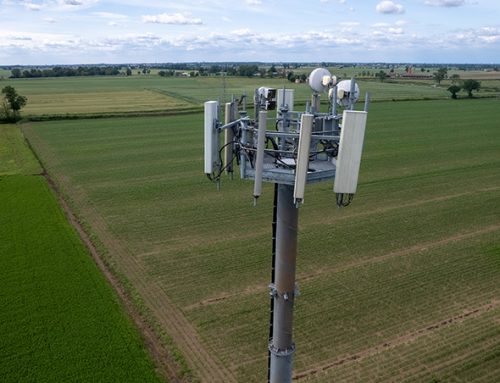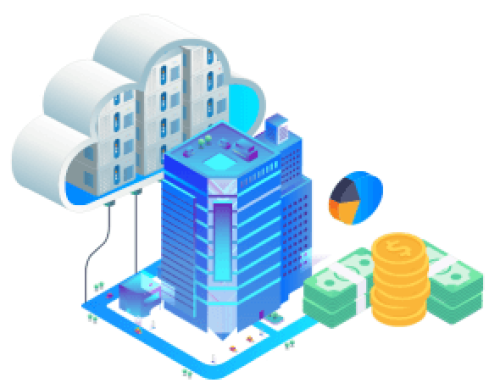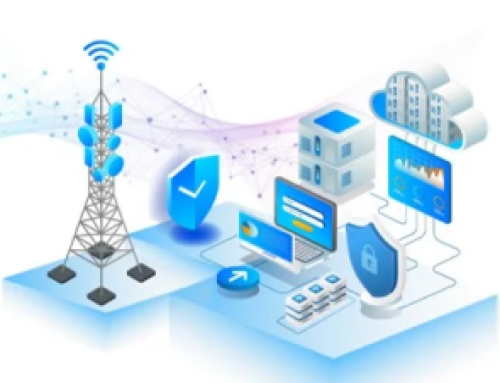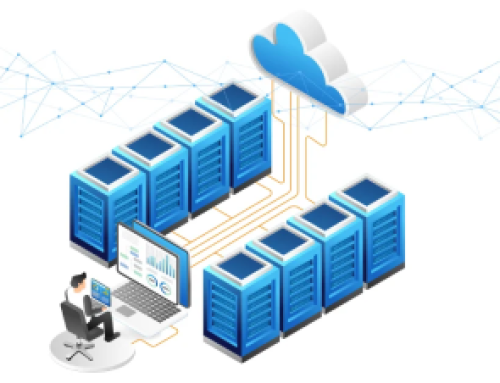As digital transformation accelerates, Communications Service Providers (CSPs) find themselves in a rapidly changing landscape. Enterprise customers increasingly demand services like the industrial Internet of Things (IoT) and private 5G, presenting significant growth opportunities for CSPs. However, to capitalize on these opportunities, CSPs must modernize their approach to network management. Legacy systems and siloed operations simply won’t cut it in today’s competitive market.
To support automation, agility, and cost-effective innovation, CSPs need a new framework: Multi-Domain Service Orchestration (MDSO). This blog explores the challenges CSPs face, the benefits of MDSO, and how it can help CSPs drive business growth in an evolving digital economy.
The Growing Demand for Service Orchestration
Digital transformation has been underway for several years, implementing technologies to meet demands of increasing revenue while reducing costs. Industries across sectors—from manufacturing to healthcare—are implementing technologies like IoT, AI, and 5G to streamline operations and enhance services. This trend creates massive opportunities for CSPs, but also significant challenges.
Here are some of the key challenges CSPs face as they try to meet enterprise demands:
- Custom Network Requirements: Enterprises are increasingly requesting specialized network configurations, such as private 5G or IoT platforms.
- Rapid Innovation: As customer needs expand, enterprises are largely taking to digital-native services and non-traditional services. CSPs need to keep pace with this demand while maintaining service quality.
- Breaking Operational Silos: Specialized, multi-vendor, and fragmented network elements network require dedicated knowledge and multiple touch points, resulting in inefficiencies and slower service delivery.
To meet these changing network requirements, CSPs must adopt automation and orchestration technologies for more agile, automated processes. This is where Multi-Domain Service Orchestration (MDSO) becomes critical.
The Complexity of Managing Multi-Domain, Multi-Vendor Networks
CSPs operate in highly complex environments, often spanning multiple network domains (access, transport, core, and cloud) and integrating technologies from a variety of vendors. Managing these multi-domain, multi-vendor environments bring significant challenges:
- Operational Fragmentation: With each network domain managed independently, CSPs struggle to achieve unified visibility and efficient control. The result is a lack of coordination between different parts of the network, making it difficult to deliver seamless, end-to-end services.
- Manual Processes: Traditional network management systems require significant manual intervention, from provisioning to fault management. These manual processes slow down service delivery and increase the likelihood of errors.
- Vendor Lock-in: Many CSPs use proprietary solutions from specific vendors, which limits their ability to integrate new technologies and hinders innovation. Vendor lock-in can also increase costs and restrict operational flexibility.
For CSPs to deliver the services their enterprise customers demand, they need to overcome these challenges and adopt a more streamlined, automated approach to network management.
What is Multi-Domain Service Orchestration (MDSO)?
Multi-Domain Service Orchestration (MDSO) is a framework that allows CSPs to automate and manage services across different network domains and vendor environments. MDSO enables CSPs to coordinate service delivery across various network layers—such as mobile, fixed, and cloud—while integrating solutions from multiple vendors.
Key features of MDSO include:
- Centralized Control: MDSO provides a unified control plane, allowing CSPs to automate service provisioning, scaling, and fault management across all domains.
- Vendor-Agnostic Integration: A robust MDSO solution is vendor-neutral, meaning it can integrate with equipment and solutions from different vendors. This is crucial for CSPs operating in multi-vendor environments, as it allows for greater flexibility and innovation.
- End-to-End Automation: MDSO automates tasks that were previously managed manually, such as provisioning, monitoring, and troubleshooting. This results in faster service delivery, improved operational efficiency, and reduced risk of human error.
By providing centralized control and automation across all network domains, MDSO breaks down operational silos, allowing CSPs to deliver seamless, high-quality services more efficiently.
Why CSPs Need MDSO to Compete in the Digital Economy
As enterprise customers increasingly adopt IoT, private 5G, and other digital transformation technologies, CSPs must evolve to stay competitive. Multi-domain service orchestration offers several key benefits that position CSPs for success in the digital economy:
Faster Time-to-Market: With MDSO, CSPs can launch new services more quickly and efficiently. Automation and centralized management reduce the time it takes to configure, provision, and deploy services across different domains. This agility is essential for meeting the fast-paced demands of enterprise customers.
Reduced Operational Costs: By automating routine network management tasks, MDSO reduces the need for manual intervention, which lowers operational costs and minimizes the risk of errors. CSPs can also optimize network resources more effectively, ensuring they only use what is necessary to meet demand.
Improved Agility: MDSO allows CSPs to quickly adapt to changes in the network or service requirements. Whether it’s scaling up a private 5G deployment for an enterprise client or optimizing bandwidth for an IoT application, MDSO enables CSPs to make these changes in real-time.
Enhanced Customer Experience: MDSO ensures seamless service delivery across multiple domains, which improves the overall quality of service for enterprise customers. With faster provisioning, better fault management, and improved network performance, CSPs can offer a more reliable and responsive experience.
The Core Components of Multi-Domain Service Orchestration
For CSPs looking to implement MDSO, it’s essential to understand the core components that make up an effective orchestration solution. Here are the key elements to look for:
- Unified Control Plane: A centralized management layer that provides visibility and control across all network domains. This allows CSPs to manage end-to-end service delivery from a single interface, reducing complexity and improving efficiency.
- Interoperability: The ability to integrate with legacy systems and equipment from multiple vendors. CSPs often have a mix of old and new technologies in their networks, so a successful MDSO platform must support both.
- Automation and AI Integration: Automation is at the heart of MDSO, but the most advanced platforms also incorporate AI and machine learning. These technologies help CSPs predict and prevent network issues before they impact service, improving reliability and reducing downtime.
- Scalability: As CSPs grow their service offerings—whether through private 5G deployments, IoT applications, or other innovations—MDSO solutions must scale accordingly. The ability to handle increasing amounts of data, devices, and network traffic is critical for long-term success.
The Role of Automation and AI in Multi-Domain Orchestration
Automation and Artificial Intelligence (AI) play a central role in enhancing the capabilities of MDSO. As networks become more complex, automation helps CSPs streamline processes, while AI can predict potential issues before they occur.
Some of the ways automation and AI improve network orchestration include:
- Automating Routine Tasks: Tasks such as service provisioning, monitoring, and fault detection are automated, reducing the burden on network administrators.
- Predictive Analytics: AI-driven insights allow CSPs to predict and resolve network issues before they affect customer experience. This proactive approach improves reliability and reduces downtime.
- Dynamic Optimization: Automation can dynamically allocate network resources based on real-time demand, ensuring optimal performance and cost-efficiency.
By incorporating AI and automation, MDSO becomes more powerful, allowing CSPs to manage their networks with greater precision and efficiency.
Case Study: CSP Success with Multi-Domain OrchestrationManagement and Orchestration (MANO) to Modernize Networks A tier 1 telecom operator in Malaysia was looking for end-to-end cloud infrastructure to advance digital transformation and address unpredictable demand for telecommunication services. TCTS implemented the ETSI-compliant MANO platform to manage the on-premises infrastructure. TCTS also provided a consolidated view of the NFV infrastructure by developing a custom dashboarding and alarm monitoring system for storage, VNF, cloud OS, compute, and VIM by leveraging cloud APIs and protocols (SNMP and REST APIs). |
Steps to Implement Multi-Domain Service Orchestration
For CSPs looking to adopt MDSO, the process can seem daunting. However, by following a structured approach, CSPs can implement MDSO in a way that maximizes benefits while minimizing disruptions.
Here are the key steps for implementing MDSO:
Step 1 – Assess Current Network Infrastructure
Before adopting MDSO, CSPs should conduct a thorough assessment of their current network, identifying areas where automation and orchestration can deliver the most value.
Step 2 – Choose a Suitable Platform
Creating and provisioning customized network services need a simplified approach. It should ideally provide a multi-role and multi-tenancy hierarchy to accommodate all specific requirements.
Step 3 – Pilot MDSO in a Specific Domain
Instead of rolling out MDSO across the entire network all at once, CSPs can begin by implementing it in a single domain, such as a private 5G network or IoT service , to test the platform’s capabilities and refine processes.
Step 4 – Gradually Expand Across Domains
Once the pilot proves successful, CSPs can extend MDSO across multiple network domains, ensuring the orchestration platform seamlessly handles more complex operations, such as cross-domain automation and service lifecycle management.
Step 5 – Train Teams on New Tools and Processes
MDSO will require new workflows and skills, especially for network engineers and operations teams. Investing in training to ensure teams understand how to manage and operate automated processes is critical for long-term success.
Step 6 – Monitor and Optimize Continuously
Implementing MDSO is not a one-time effort. CSPs should continually monitor network performance, identify potential bottlenecks, and optimize orchestration processes as they grow or evolve their service offerings.
The Future of CSPs with Multi-Domain Service Orchestration
As communication service providers continue to evolve, they must find ways to meet the increasing demands for digital transformation services, such as IoT, private 5G, and enterprise cloud solutions. Multi-Domain Service Orchestration will play a crucial role in this transformation, offering CSPs the automation, agility, and operational efficiency they need to remain competitive.
By leveraging MDSO, CSPs can:
- Deliver services faster and more cost-effectively
- Seamlessly integrate technologies from multiple vendors
- Automate routine tasks, freeing up resources for innovation
- Reduce operational costs while improving service quality
- Scale efficiently to meet the growing demands of enterprise customers
In a future defined by connected devices, smart cities, and real-time applications, CSPs that embrace multi-domain orchestration will have the tools they need to lead the charge in digital transformation.





















![Telco Cloud: A Key Enabler to Telco Transformation [Part 1]](https://www.tatacommunications-ts.com/wp-content/uploads/2023/06/Telco-Cloud-blog_image-1-500x383.png)








